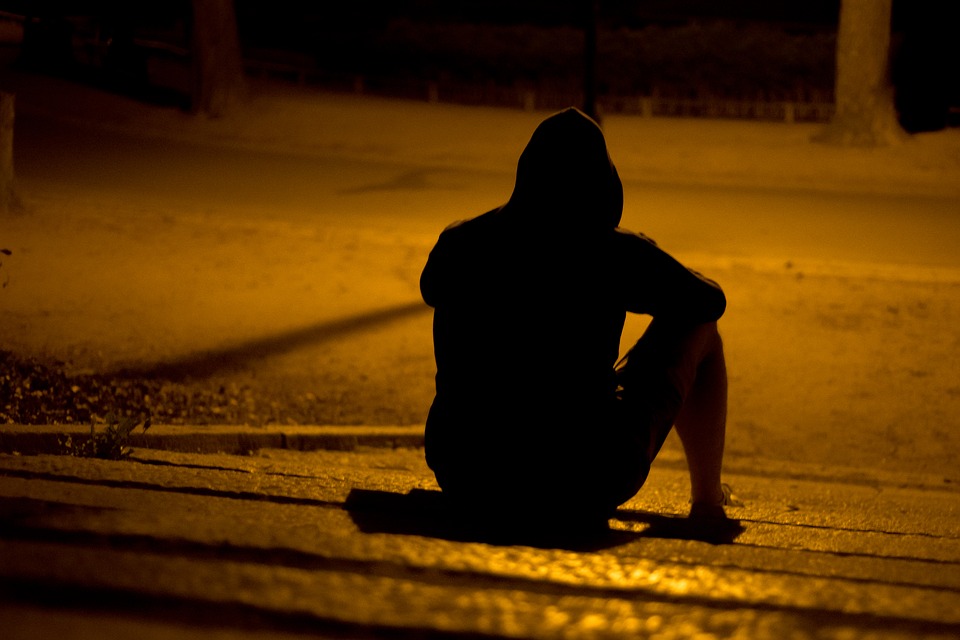Mental Health Awareness Month: Teen Suicide
 May is Mental Health Awareness Month and Brooke Lehmann‘s article on teen suicide addresses this sobering crisis. Ms. Lehmann, a clinical social worker and public interest attorney with expertise in the areas of children’s health, education, and child welfare, is a lecturer in the Frank Batten School of Leadership and Public Policy at the University of Virginia. Ms. Lehmann is President of Childworks, PLLC and current founding Partner of Capitolworks, LLC.
May is Mental Health Awareness Month and Brooke Lehmann‘s article on teen suicide addresses this sobering crisis. Ms. Lehmann, a clinical social worker and public interest attorney with expertise in the areas of children’s health, education, and child welfare, is a lecturer in the Frank Batten School of Leadership and Public Policy at the University of Virginia. Ms. Lehmann is President of Childworks, PLLC and current founding Partner of Capitolworks, LLC.
Brooke Lehmann’s article, Capitolworks: Just the Facts (and an opinion)…Teen Suicide-why it’s on the rise and thoughts on how to “prevent” this trend, was published on April 16, 2019. The article is reprinted with permission.
Last week, several major news outlets featured headlines and articles on the dramatic rise of teen suicide. The reports contained staggering numbers painting a picture for the reader of a society whose children and adolescents are experiencing a mental health crisis that far too frequently results in death by suicide. While not a public epidemic like some others our nation is facing, it is still a crisis that has garnered support from celebrities to the federal government. And yet, the number of young people dying continues to rise. Let’s try to understand why this may be.
According to the U.S. Department of Health and Human Services, suicide is the second leading cause of death among 15-24-year-olds. Diagnoses of suicidal thoughts and suicide attempts increased from 580,000 in 2007 to 1.12 million in 2015, according to a study published in the Pediatric Journal of the American Medical Association Medicine. The only two things that cause more death among teenagers are accidents (usually in the car) and homicide. And even younger children do not escape. Suicide is the fourth leading cause of death for young people between the ages of 10 and 14. And the statistics keep coming, one more disturbing than another. They all, however, paint the same picture: that of another mental health crisis.
But why? Perhaps one explanation could be the cultural shifts that have taken place over the last decade. For example, expectations of what success means for children and adolescents has changed dramatically. Increasing pressure to achieve in school, work, extracurricular activities, and even social connectedness seems to know no bounds. As the mother of three children, one of whom is an adolescent, I bear witness to this every day. However hard we may try to mitigate this trend, it is evident that an adolescent’s day is getting longer, their sleep is getting shorter and their stress getting higher.
Add to this access to the internet and social media. The constant connectedness that this medium offers means that events in a youth’s life, both positive and negative, can now be shared among hundreds of people. Not only does this create an opportunity for youth to relive embarrassing and stressful events over and over again, but it also offers an opportunity for magnified ridicule and bullying. Furthermore, the internet is filled with false, erroneous, and even damaging information that a vulnerable youth could see as the truth and advice worth following. We must remember that physiologically, adolescents are in one of the most challenging developmental periods of their lives. With significant aspects of their physical and emotional development at their peak, adolescents just aren’t capable of processing all of the information that is now available.
So what do we do about this? One suggestion would be to change the paradigm through which we approach teen suicide. Currently, as the headlines stated, we speak about teen suicide as something isolated from other aspects of mental health. Similarly, we talk about preventing this specific action as if suicide resides in a vacuum. However, as I think about “suicide prevention” I think about our mental health system, and it’s ability, or inability, to offer early intervention and treatment for children and adolescents. After all, isn’t suicide a manifestation of mental illness and not a condition or diagnosis in and of itself?
Unfortunately, however, our mental health systems are not adequately prepared to meet the increasing demand for these services. For example, while we may have become more advanced in diagnosing various forms of mental illness not only among youth but also very young children, the workforce necessary to provide the corresponding services is not there. According to a 2015 Child Mind Institute Children’s Mental Health Report, eighty percent of children with a diagnosable anxiety disorder and sixty percent of children with diagnosable depression are not getting treatment. Currently, forty-two states are experiencing a severe shortage of practicing child, and adolescent psychiatrists (CAPs) (less than 17 CAPs per 100,000 children below the age of 18) and the other eight states are experiencing high shortages. Given that we know anxiety and depression are substantial risk factors for suicide, it seems that an investment in our mental health system for children and youth might be the most effective way to prevent teen suicide. While training in the warning signs of suicide, crisis hotlines and other resources that assist on the periphery of suicide should continue, what we really need is a mental health system that can help alleviate the impact that mental illness can have on a child and adolescent and perhaps thereby reduce incidents of suicide.
Contributing Author: Katherine Pajewski
- Life at the Top: Climate Change in Utqiaġvik, Alaska
- The Only Thing We Have to Fear is Fear Itself
- Stay on Track: Turning Resolutions into Results
- UVA Club of Tidewater: Hoos at Harbor Park
- UVA Club of Atlanta: Cavs Care - Volunteer Income Tax Assistance Events
- UVA Club of Charlottesville: Hoos Reading Hoos Book Club

